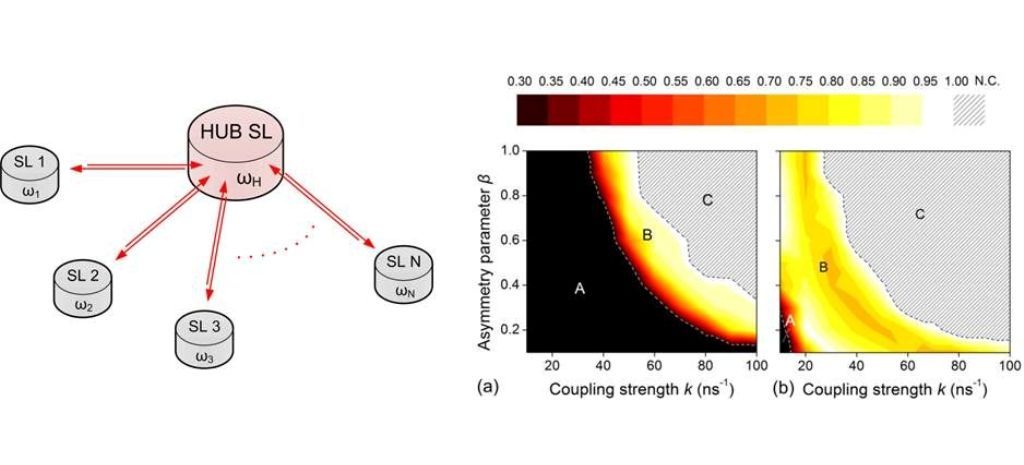Home
Welcome to the official web-page of research project “CONECT – Chaos Optical NEtworks: from sensing to CrypTography”.
Within the last decades the study of complex dynamics in coupled physical systems has evolved rapidly. In such systems, the generation of an output signal (which could be the width swing of a pendulum, the voltage output from an electronic circuit, the optical power of a photonic device or the evolving of a biological sample) depends on the non-linearity of the oscillator that describes the process, as well as on the environmental conditions or other signals that contribute as an input to the process. The synchronization property of these coupled oscillators has been studied in parallel, since its existence demonstrated the capability of independent oscillatory units to provide identical (or at least highly correlated) output signals, despite any physical dissimilarities of the units or variations in their initial conditions. Semiconductor lasers (SLs) have been examined thoroughly as non-linear elements that offer the desired complex signals. These optical devices are characterized by an exceptional advantage for many application fields: the complex signals are generated on an optical carrier with a frequency up to hundreds of THz, which is easy to transmit in large distances. Especially in the field of optical communications, the potential of SLs to generate and support chaotic and broadband dynamics in their optical carriers urged to investigations in security oriented applications in communications. Such systems were based in the chaos synchronization property – through coupling – of the communicating parts, they usually employed a transmitter and a receiver configuration, while data where encrypted on the chaotic carrier at the emitter and recovered at the receiver (a). Only lately, a burst of works have demonstrated the capability of synchrony and joint behavior of mutually coupled SLs in various configurations that employed a larger number of chaotic optical oscillators (b,c). These concepts lead to completely new directions of research in areas that have embraced more conventional ways of thinking. Holistic approaches of networks that communicate through complex and chaotic signals are now adopted in fields such as neural networks based on optical reservoir computing, a recently introduced bio-inspired approach to artificial intelligence. Such concepts are considered to be critical for evaluation and integration to optical communication networks, creating novel perspectives for a number of issues that are dealt mainly with computational tasks. Such an approach could provide breakthrough solutions in optical sensing network, user authentication, user synchrony and hardware-secured optical network applications.
State of the art of chaos-secured optical communications (a) and future perspectives on its application in optically coupled laser networks (b,c).




